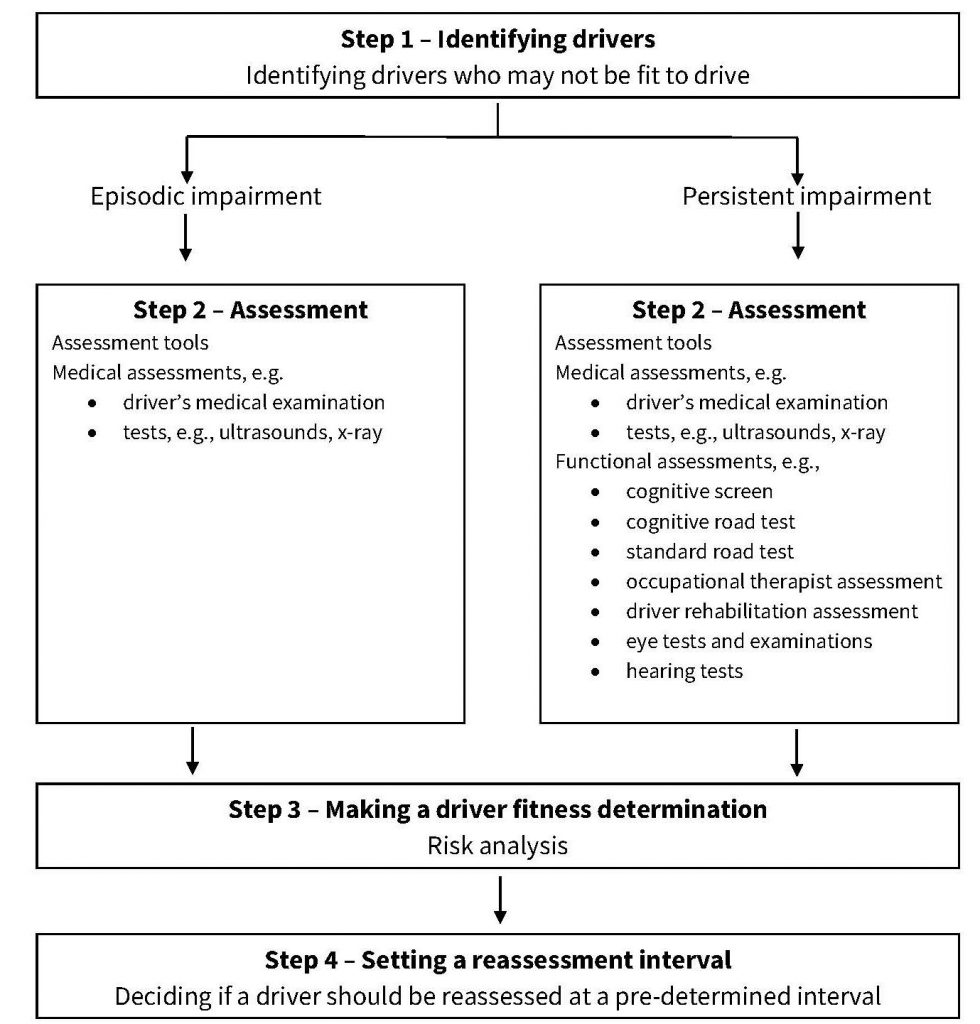Introductory Summary to the CCMTA Medical Standards for Commercial Drivers
The Canadian Council of Motor Transport Administrators (CCMTA), National Safety Code, Standard 6: Determining Driver Fitness in Canada is a two-part document that focuses on explaining how Canadian jurisdictions perform their role in assessing the medical fitness of drivers (Part 1), and the CCMTA Medical Standards for Drivers (Part 2). This 297-page document addresses drivers of both personal and commercial vehicles. Below is an introductory summary, comprised of sections directly from Standard 6, specifically focusing on commercial drivers. This summary is a tool for commercial transportation companies to support drivers with their understanding of the medical requirements outlined in this document.
Introduction (Foreword)
Driving a motor vehicle in Canada is a privilege that may be accorded to an individual by the driver licensing authority of the province or territory in which they live. In order to exercise a privilege such as driving, the individual must meet the specified criteria, including the demonstration of an acceptable level of competence. To qualify for a driver’s license, an individual must, among other requirements, be able to demonstrate medical fitness to drive.
What is CCMTA?
The Canadian Council of Motor Transport Administrators (CCMTA) coordinates all matters dealing with the administration, regulation and control of motor vehicle transportation and highway safety. Membership includes representation from provincial and territorial governments and the federal government of Canada.
What is the mandate of the CCMTA Driver Fitness Overview Group (DFOG)?
The mandate of the CCMTA DFOG is to derive a set of driver fitness policies for jurisdictional use that incorporate the best ideas and principles included in the literature and to maintain its currency through periodic review. Balancing road safety and mobility needs of Canadians through collaborative development and application of world class driver medical fitness standards and operational processes based on best-evidence.
Where does the CCMTA Determining Driver Fitness guidance apply?
All Canadian provinces and territories have the authority to establish their driver fitness policies and procedures. All have a medical review board or unit acting in an advisory capacity to the jurisdiction’s licensing body on medical matters that may affect a person’s fitness to drive. However, to support a consistent approach to driver fitness across the country, the provinces and territories have agreed to publish the CCMTA Medical Standards for Drivers.
Under the North American Free Trade Agreement (NAFTA), on March 30, 1999, the United States and Canada agreed that the medical provisions for drivers of commercial motor vehicles (CMVs) of U.S. Federal Motor Carrier Safety Regulations (FMCSRs) and the Canadian National Safety Code (NSC) are equivalent. Because the reciprocity agreement between the United States and Canada identifies the CCMTA standards as the standard for commercial drivers, regardless of individual provincial or territorial standards, drivers of CMVs must conform to the CCMTA standards if they wish to drive a CMV in the United States.
When are medical assessments required for Commercial Drivers?
Drivers with Class 1 – 4 licences will be screened for medical conditions that may affect driving as follows:
(a) up to age 45, every 5 years
(b) from age 45 to age 65, every 3 years, and
(c) from age 65, annually
(d) or more frequently at discretion of the driver licensing authority.
Medical conditions at-a-glance
For each major medical condition identified in the medical condition chapters, the following table identifies:
- whether the resulting impairment is persistent or episodic
- the chapter where the specific information is available

Persistent impairment
A persistent impairment is an ongoing or continuous impairment to a function necessary for driving. The potential effects of persistent impairments on the functions necessary for driving are generally measurable, testable and observable. Although the condition may be progressive, the progression is usually slow and sudden deterioration is unlikely. Persistent impairments may be stable, e.g. loss of a leg, or progressive, e.g. arthritis.
Episodic impairment
An episodic impairment is the result of a medical condition that does not have any ongoing measurable, testable or observable effects on the functional ability to drive but that may result in an unpredictable sudden or episodic impairment of the functions needed for driving.
Model for the Administration of Driver Fitness Programs


For more information regarding the CCMTA Medical Standards and driver fitness management please feel free to connect with our team to learn more. [email protected]
